The Leaning Tower of Pisa, an iconic architectural landmark in the Piazza dei Miracoli in Pisa, Italy, has a storied history dating back to its construction, which commenced in August 1173. Originally intended as the bell tower for the Cathedral of Pisa, the building is a testament to Romanesque architecture, featuring characteristic elements such as semi-circular arches, robust columns, and decorative arcading. The tower’s unique tilt, a consequence of its foundation on soft, unstable soil, became apparent during construction, leading to subsequent modifications and interventions throughout the centuries. Architects, including Bonanno Pisano and Diotisalvi, have been associated with its design, though the true originator remains uncertain. Despite engineering errors in the tower’s construction, including inadequate foundation support and a weighty marble facade, architects in the 13th century added masonry to counterbalance the lean. Completed in the mid-14th century, the tower’s tilt worsened over the centuries, reaching a critical 5.5-degree lean by 1990. The Leaning Tower of Pisa serves as both a symbol of architectural prowess and a cautionary tale. The tower’s unintentional lean has limited its impact as an inspiration for deliberate-leaning buildings. Originally designed as a bell tower, its height and round shape allowed the bells to be heard across greater distances, fulfilling its intended purpose despite the ongoing tilt. Building maintenance involves continuous monitoring, restoration campaigns, and preservation efforts. Skilled experts address weathering, pollution, and aging of materials, and strict visitor limitations are imposed to reduce strain on the infrastructure. The tower’s cultural and contextual relevance is reflected in its association with the Cathedral of Pisa, showcasing the importance of Christianity and civic pride in medieval Italy. The tower’s location in the Piazza dei Miracoli exemplifies Pisa’s ambition and prosperity during this period. For architects and enthusiasts visiting, specialized tours, such as the “Architectural Tour of the Leaning Tower of Pisa and Its Restoration Work,” offer in-depth insights into the tower’s history, architecture, and extensive restoration process. 3D scan tours and private access for architectural analysis further cater to those seeking a technical understanding of the landmark.
What is the Leaning Tower of Pisa?
The Leaning Tower of Pisa, known in Italian as the Torre Pendente di Pisa, is a free-standing bell tower in the Piazza dei Miracoli (“Square of Miracles”) in Pisa, Italy. The construction began in August 1173 to serve as the bell tower for Pisa’s cathedral complex. It was designed to stand 197 feet (60 meters) tall with eight stories surrounding a central hollow cylinder. Three architects are believed to have overseen its initial construction during the Romanesque period: Bonanno Pisano, Gherardo di Gherado, and Guglielmo. The tower is located on soft alluvial soil of sand and clay, which could not correctly support the tower’s heavy load. By the time the third story was completed in 1178, the building had begun to sink unevenly on its weak foundations, causing it to tilt.
The Leaning Tower of Pisa resumed in the 13th century, with architects adding extra masonry to the higher side to compensate for the lean. However, this excess weight caused further sinking. The tower was officially completed in the mid-14th century, topping at 183 feet (55.86 meters) high on its lower side and 186 feet (56.67 meters) on its higher side. Over the next six centuries, the tilt gradually increased at about 1/16 to 1/8 of an inch per year, eventually reaching an alarming 5.5-degree lean by 1990. That year, the tower was closed for extensive renovation to prevent collapse. The ornate white marble tower contains seven bells in its top chamber, a spiral staircase with some 296 steps, and intricately carved exterior column capitals and other decorative elements in the Romanesque architectural style. The Leaning Tower of Pisa stands among several historic buildings on the Piazza dei Miracoli.
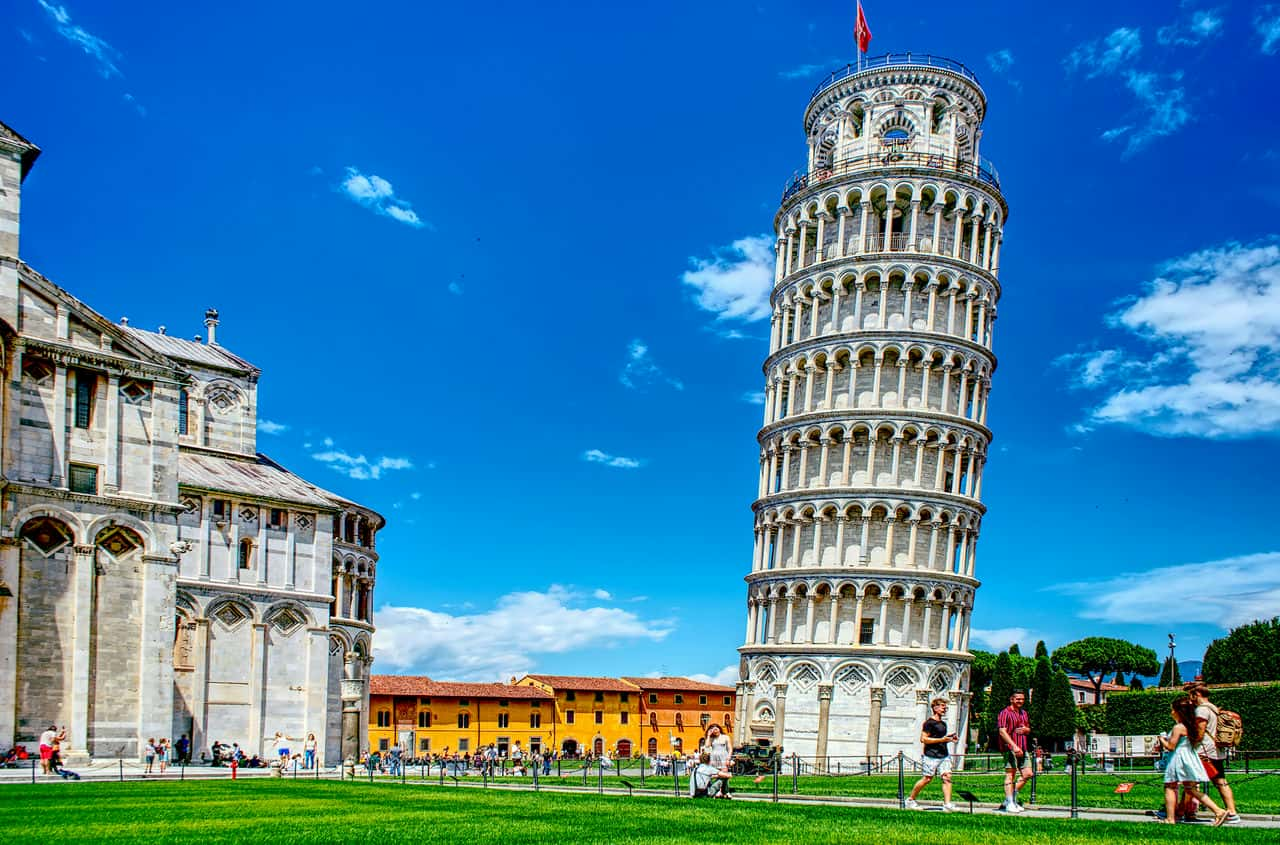
What architectural style is most prominent in the Leaning Tower of Pisa?
The Leaning Tower of Pisa is considered one of the finest examples of Romanesque architecture, a prominent architectural style in medieval Europe from the 10th to the 12th century. Semi-circular arches, robust columns, towers, decorative arcading, and stone over brick characterize Romanesque architecture. The Tower’s full white marble columns on the exterior and surrounding its hollow central core are classic features of Romanesque structures. Its stacked arcaded levels with paired and triplet arches opening onto the interior follow standard Romanesque church design. Decorative marble panels with intricately carved animal motifs between column capitals showcase another hallmark Romanesque device. The Leaning Tower was designed to integrate with the strong Romanesque facade of the Duomo di Pisa. The marble columns, blind arches, and arcades mirror elements of the adjacent cathedral for harmony and cohesion even as the Tower’s lean took it in another direction.
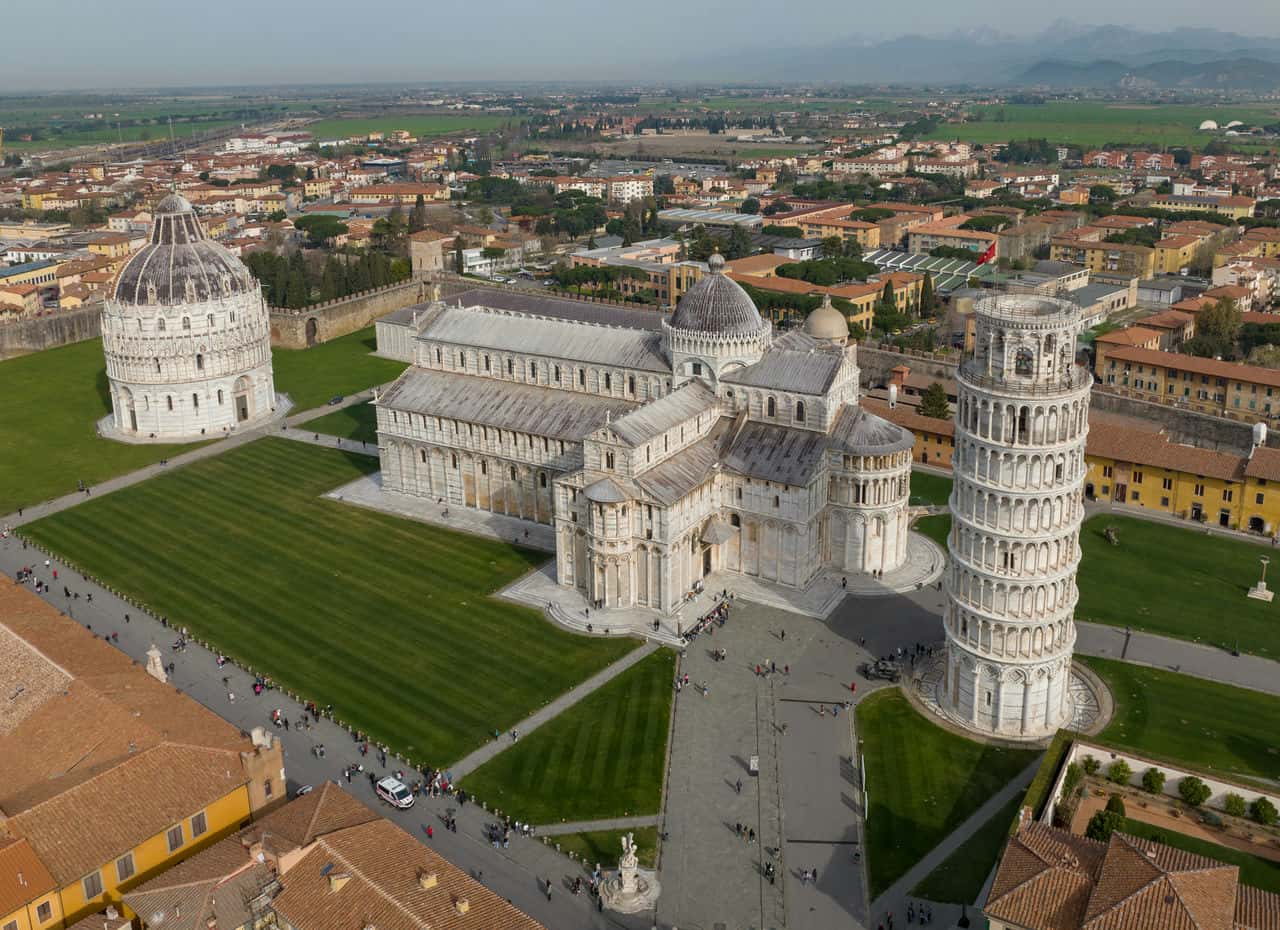
What structural engineering principles were employed in the construction of the Leaning Tower of Pisa?
Several significant structural engineering errors were made in the original construction of the Leaning Tower of Pisa due to unforeseen issues with the underlying soil. Firstly, the tower’s initial foundations needed to be improved to support its heavy weight adequately. Engineers at the time failed to account for the soft, loose earth of sand and clay under the planned construction site. As a result, the foundation needed to be more profound and more substantial when construction began in 1173 AD. Secondly, the design contained flaws that contributed to the eventual leaning and instability. Giving the freestanding bell tower a weighty marble facade on all sides meant gravity forces were too concentrated towards its core. The hollow center offered some relief, but its medieval architects and engineers could have better calculated the force distribution through such a tall, slender structure. Lastly, a faulty assessment of the site’s soil quality led to the gross under-design of the stabilizing foundation. Its survival ironically relied on delays that let foundations settle, highlighting innate defects overcome through belated remedial measures rather than initial sound construction principles.
Who designed the Leaning Tower of Pisa?
The architect behind the initial design of the Leaning Tower of Pisa has yet to be discovered and has been a source of controversy over the years. For a long time, credit was given to artist and architect Bonanno Pisano, who resided in Pisa during the 12th century and was known for his bronze castings. Some scholars cite a piece of cast bronze bearing his name found at the tower’s base after its tilt began as evidence of his direct involvement. However, more recent assessments indicate it is unlikely Bonanno Pisano was the principal designer. Another proposed contender is Diotisalvi, the architect associated with several other structures in Pisa during the late 12th century. The construction techniques and certain aesthetic elements used in the Tower closely align with Diotisalvi’s other projects, suggesting he was the original architect before his death shortly after work began in 1173. Records also indicate an architect named Guglielmo may have contributed during the initial planning in 1174. Historical documentation of the Tower’s construction progress has identified other leading architects in later phases. After the first architect’s passing, no further building took place for nearly a century. The project resumed under the direction of architect Giovanni di Simone in 1272. Following Simone’s death, the tower sat half-finished for another 65 years. Tommaso di Andrea Pisano completed the upper floors and decorative detailing between 1360 and 1370.
What are the historical design influences visible in the Leaning Tower of Pisa?
The design of the Leaning Tower of Pisa shows the influence of several architectural styles. Firstly, the tower’s stacked columns, arches, and open-air galleries reflect the impact of Romanesque architecture – the type popular in medieval Europe from about 1000 to 1200 AD. Many cathedrals and church towers built during this period feature robust columns, semicircular arches, and arcaded levels similar to the Tower. Secondly, the Tower includes call-backs to design principles from ancient Roman buildings revived in the Romanesque period. For instance, its geometric marble patterns resemble old Roman mosaics, while its carved decoration copies Roman relief sculpture. Lastly, some historians propose the circular floor plan was inspired by Byzantine architecture from the Near East. This shape contrasts with the square layouts standard in European towers. Intricately patterned marble columns also suggest a blending of Eastern and Western aesthetics. Style made the tower instantly recognizable, even as its infamous tilt stole most historical attention.
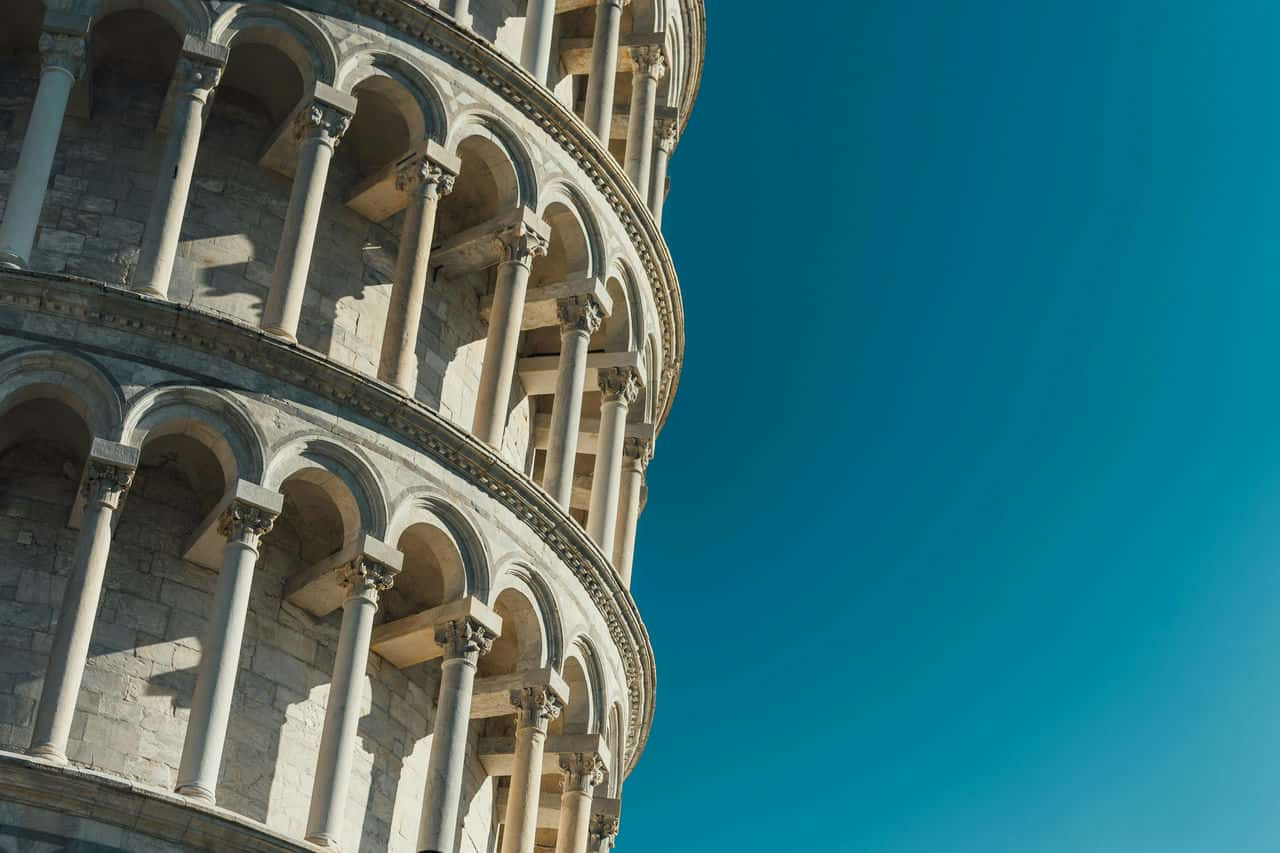
How has the Leaning Tower of Pisa influenced the design of other buildings in Italy?
The Leaning Tower of Pisa has come to symbolize both architectural and human ingenuity. It was intended to stand tall and straight as a freestanding bell tower for the cathedral complex in Pisa. Mistakes in the foundation led the tower to start leaning before construction was even finished in the 14th century. Multiple attempts had been made over the centuries to try and correct the lean, but it was in the 1990s that engineers were finally able to stabilize the tilt. The Leaning Tower’s influence on other buildings in Italy has been relatively minimal. Its faulty design served more as a cautionary tale than an inspiration. Architects and engineers studied the flaws in the tower’s construction to learn what not to do. The outlook inspired some limited imitation. Its main impact has been as a teaching tool for how not to build a leaning tower. Its legacy lives on more as an iconic image than a prototype for deliberate-leaning buildings.
What purpose does the Leaning Tower of Pisa serve, and how does the design help?
The Leaning Tower of Pisa was initially designed to be the bell tower or campanile for the Cathedral of Pisa, known as the Duomo. Its purpose was to house the bells that would ring out to call worshipers to prayer services and other events at the cathedral. Firstly, the tower’s height, intended initially to stand nearly 200 feet (about 60 meters) tall, enabled the sound of the bells to carry quite far. The greater the size, the farther the sound would travel and the more people would be summoned by the ringing. Secondly, the round shape of the tower, built with white marble, also helped project the sound. The smooth curved walls reflect and amplify the sound waves emanating from the belfry at the top. Lastly, the Leaning Tower of Pisa was constructed as the bell tower for the Cathedral of Pisa, giving height and amplifying the bells calling people to the church. Its impressive size allowed the bells to be heard across greater distances, while its round shape focused the sound waves. Even though the tower tilted from the start of construction, it has succeeded throughout history in its intended purpose.
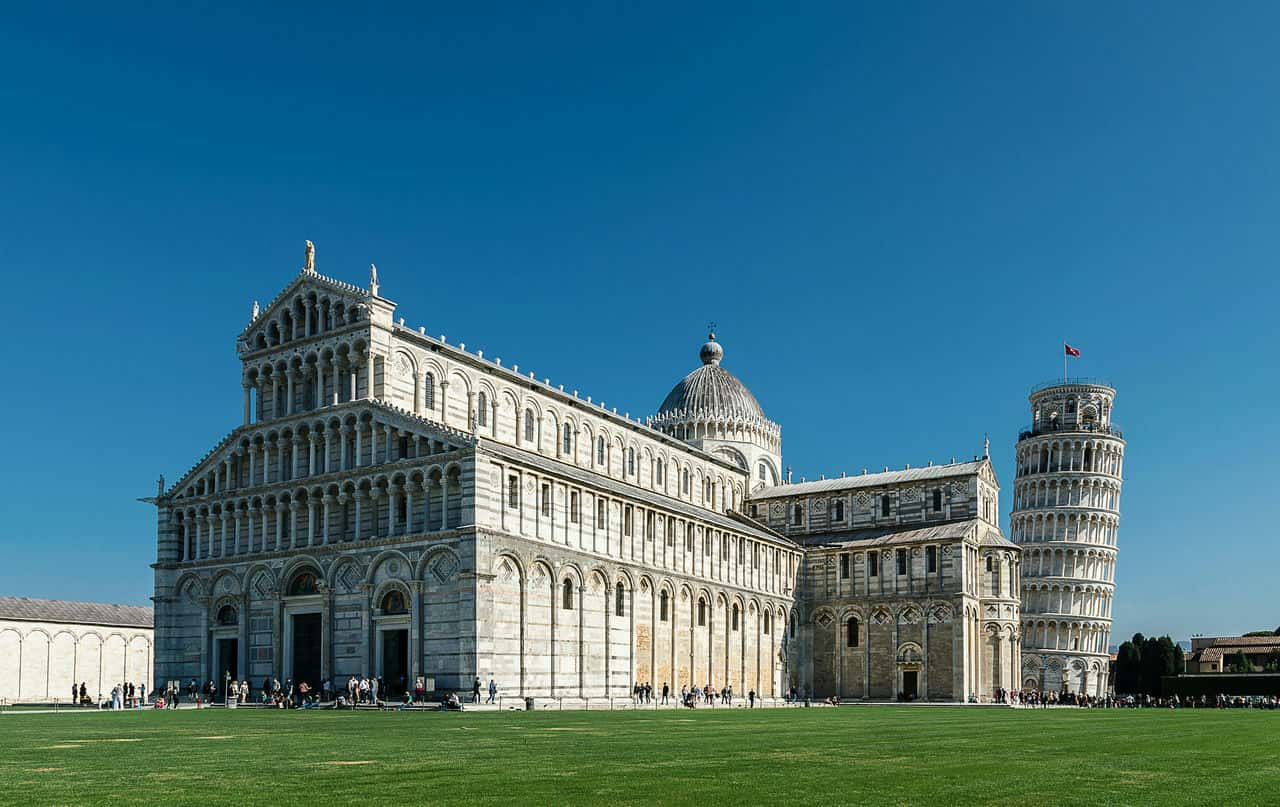
How is the Leaning Tower of Pisa maintained?
The Leaning Tower of Pisa is maintained in several ways. Firstly, regular monitoring and measurements are crucial to keeping the tower stable. An interdisciplinary surveillance group uses exact instruments to continually monitor the building, detecting even minute shifts in its position. If any concerning changes were caught, they could quickly adjust to counteract them. Secondly, the tower was stabilized through major remediation works in the 1990s that corrected part of the lean. Teams removed soil underneath the raised end of the foundations, straightening the building. They also added lead counterweights on the north side to balance the structure. Lastly, the tower undergoes constant maintenance and restoration to repair damage from weather, pollution, and simple aging of materials. Skilled preservation experts carefully clean, consolidate, and protect the intricate marble facades, statues, and other decorations. The seven bells at the top have been secured and cannot ring, eliminating vibration risks. Visitors are also limited in number per day to reduce strain on the infrastructure. Major restoration campaigns aim to respect the tower’s historic fabric while shoring up structural deficiencies.
How does the Leaning Tower of Pisa reflect cultural and contextual relevance in its design?
The Leaning Tower of Pisa reflects cultural and contextual relevance in its design in several ways. Firstly, the Leaning Tower of Pisa was designed to be the bell tower for the Cathedral of Pisa, reflecting the cultural importance of Christianity and the church in medieval Europe. The white marble and the elegant design of stacked arched galleries reflect the Romanesque architectural style that was popular then. This demonstrates how the tower was contextually relevant, blending regional tastes. Secondly, the location of the Leaning Tower within the Piazza dei Miracoli, beside the Cathedral and Baptistery, illustrates the civic pride and ambition of Pisa as an emerging power in medieval Italy. Lastly, the Field of Miracles complex was meant to showcase the city’s growing status through extravagant religious buildings. The mistake that caused the tower to lean does not take away from the fact that its initial design and construction symbolized prosperity and advancement for Pisan society.
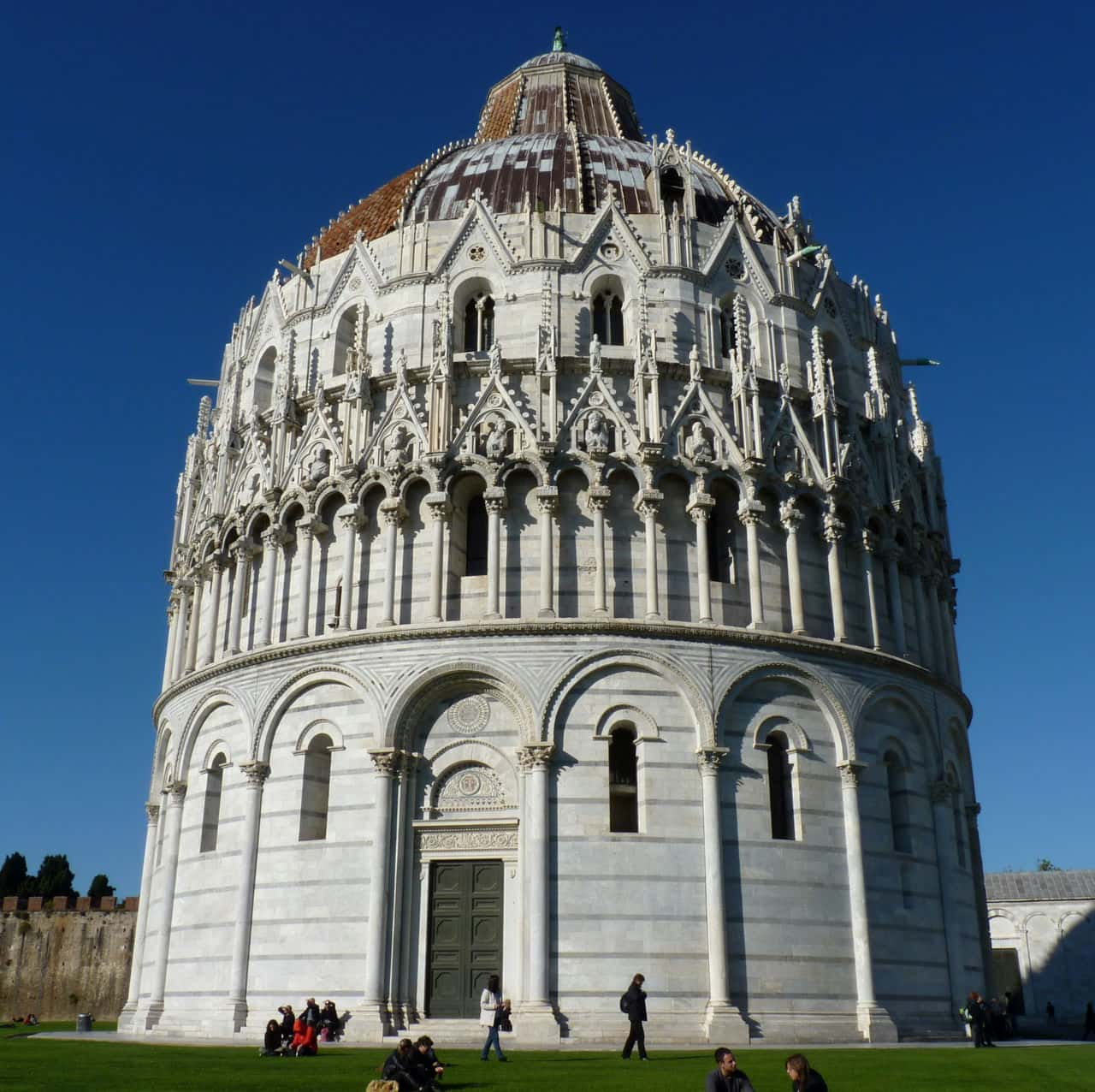
What architectural trend or movement does the Leaning Tower of Pisa represent?
The Leaning Tower of Pisa is an excellent example of Romanesque architecture with some Islamic influences. Construction began in 1173 in the Romanesque architectural style, standard for medieval European churches and cathedrals. The tower’s infamous lean was not intentional – it began to tilt during construction due to the soft, unstable soil underneath. Builders tried to compensate, but the lean continued to worsen over time. The tower was essentially an engineering mistake, not the product of any particular architectural school of thought. The Leaning Tower of Pisa was built in the Romanesque style, but its leanness was unintentional and resulted from flaws in its original construction. It does not represent any broader architectural trends or movements beyond the medieval Romanesque style of its intended design. The tower’s lean has become its claim to fame.
What are the challenges faced during the restoration of the Leaning Tower of Pisa?
The primary challenge in restoring the Leaning Tower of Pisa was stabilizing the structure and preventing further tilting or collapse. When restoration efforts began in 1990, the tower had reached a dangerous lean of 5.5 degrees from the perpendicular, making it at risk of toppling over. The soft soil underneath and the tower’s weight made fixing the lean difficult. Several approaches had been tried over the previous centuries, often inadvertently worsening the problem. Firstly, the major challenge was safely straightening the tower enough to stabilize it without causing damage. To achieve this, engineers had to remove a significant amount of soil from underneath the tower’s north side foundations to allow that side to settle back closer to vertical. They also had to add lead counterweights to the south side to counterbalance the lean. Moving too quickly could have shocked the structure and caused catastrophic failure. Secondly, the access and space constraints. Other historic buildings surrounded the tower, and engineers needed more physical access to the foundations and restricted space for equipment and materials. The tower also had to remain closed to the public during restoration work, impacting local tourism revenue. Site restrictions increased the complexity of transporting materials and using heavy machinery. Thirdly, preservation standards created challenges. As a historic structure, the tower had to be restored according to strict requirements to avoid altering its appearance or damaging the original materials. This constrained options for remediating the lean. More invasive or transformative solutions were off the table, even if they may have resolved the issue more quickly. Lastly, extensive diagnostics and sensors were needed to continuously monitor the tower’s movements and stability. Detailed 3D computer models and thousands of measurements informed the restoration plan and strategy. During active work, laser reflections, pendulum sensors, load cells, clinometers, extensometers, thermocouples, and other tools tracked the tower’s response in real-time. Interpreting this data was crucial but complex with a one-of-a-kind structure.
How does the Leaning Tower of Pisa comply with contemporary safety and accessibility standards?
As a medieval structure, the Leaning Tower of Pisa was not originally built to comply with modern safety and accessibility standards. However, following its extensive restoration and stabilization between 1990 and 2001, efforts have been made to improve the tower’s compliance while preserving its historic fabric. Firstly, the primary safety upgrades involved installing safety barriers and netting. Guard rails line the open balconies on each tower level, helping prevent accidental falls. These measures offer protection in case anyone falls or items are dropped. Secondly, the complete structural restoration ensured the tower met baseline safety standards. Based on international building codes, the remediation straightened the tower enough to be considered safe for at least 200 years. The tower’s foundations, masonry walls, and ornamental loggias were all shored up and reinforced. Ongoing monitoring provides early warning if any concerns develop. Thirdly, options are quite limited, given the tower’s small medieval design. It needs modern features like elevators. However, assistance services allow visitors with limited mobility to be carried up the stairs to experience the panoramic views. Stair lifts or other access technology would be too invasive to install. Careful footpath design around the tower’s exterior base also provides step-free access on the ground level.
Are there any specific tours for architects or architecture enthusiasts visiting the Leaning Tower of Pisa?
Yes, as one of the world’s most iconic works of engineering and architecture, the Leaning Tower of Pisa understandably draws many visitors interested in those fields. Several tour options cater to architects, engineers, and general architecture enthusiasts who want a more technical, behind-the-scenes look at the famous landmark. The most popular specialized tour is the “Architectural Tour of the Leaning Tower of Pisa and Its Restoration Work.” This 2.5-hour guided tour digs into the structural history of the tower, its unique architecture, the failed attempts to straighten it over the centuries, and the extensive 1990-2001 remediation project that finally stabilized the lean. The Engineering Faculty of the University of Pisa leads the tours, providing unparalleled expertise. Groups access restricted areas and viewpoint platforms typically off-limits on general visits. Another option popular with architects is a 3D scan tour of the tower. Advanced laser imaging technology has digitally mapped the entire structure to minor details. The Pisa Charterhouse Museum offers guided tours of this comprehensive 3D model. Visitors wearing 3D glasses can examine the Leaning Tower from endless perspectives and distances, visualizing internal and external architectural elements. This virtual approach suits those wanting an in-depth understanding of the geometry and complexity underlying the deceivingly simple exterior lines. For a more hands-on experience, the Opera della Primaziale Pisana organization provides private access to the tower for architectural analysis by advanced request. Accompanied by an engineering expert, these visits allow the original materials and structural components to be touched at close range without the crowds. This offering also includes rooftop access.
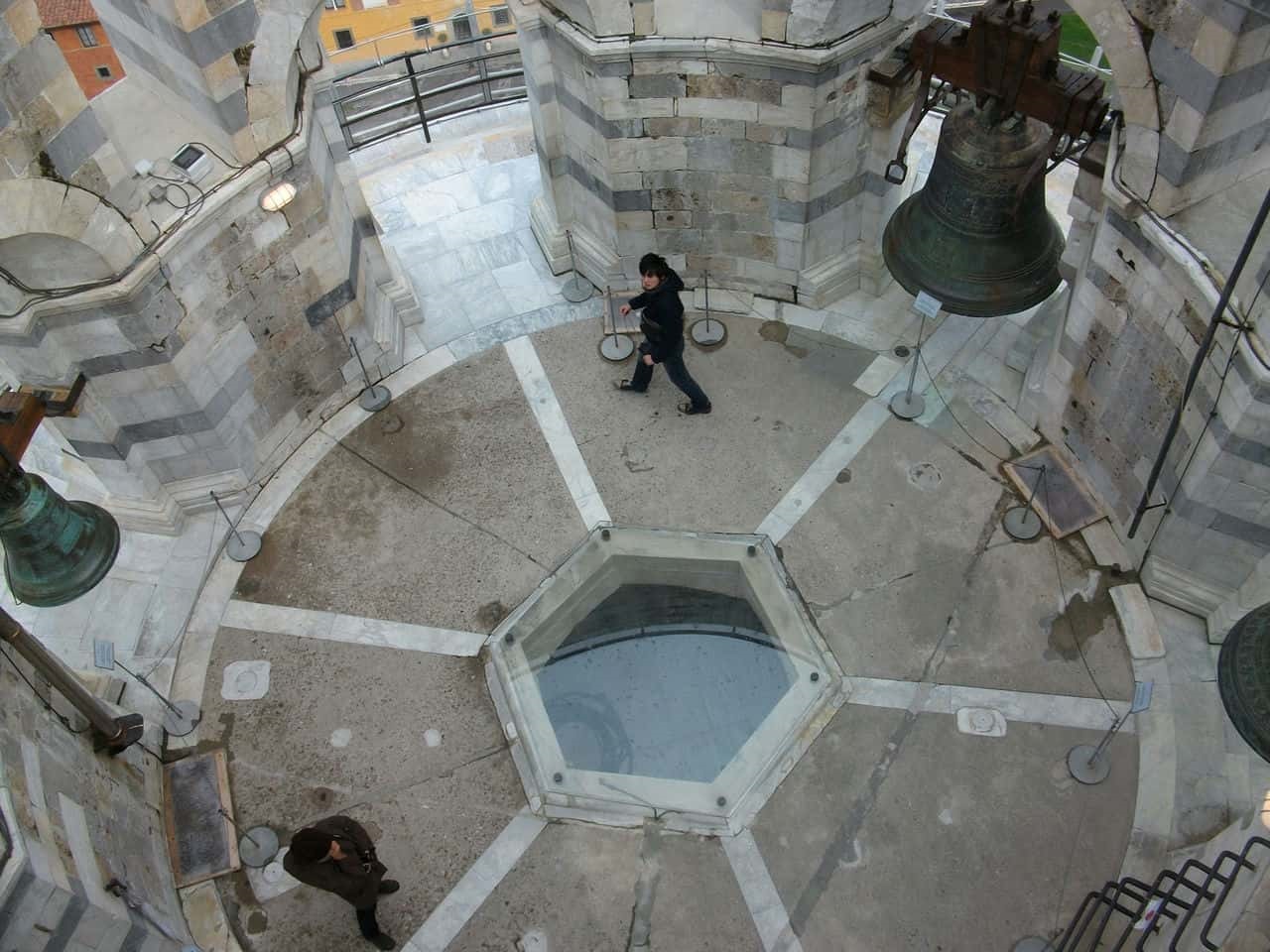
What lessons can architects learn from the design and construction of the Leaning Tower of Pisa?
The most apparent lesson the Leaning Tower of Pisa represents for architects is thoroughly surveying and assessing site conditions before construction. Firstly, the tower’s foundational issues are directly tied to being built on soft, unstable soil unable to bear its weight. Architects must invest due diligence in selecting sites and foundations to support intended structures. Conducting soil studies, compaction testing, hydration analysis, etc., helps ensure stability. Secondly, the tower is a case study on the risks of rigidly sticking to original specs when problems emerge. After the lean became apparent after the first few stories, engineers added embellishments to mask the issue instead of reevaluating the design. Architects should remain flexible and favor simplicity when complications happen. Thirdly, the tower demonstrates the importance of structural redundancies and safety factors. Despite its precarious appearance, various elements have prevented outright collapse – from the delayed construction timeline enabling soil compression to the subtle curve built into upper stories counterbalancing forces. Lastly, the tower shows value in overbuilding foundations and superstructures. Though the lean results from inadequate foundations, massively oversized load-bearing walls, columns, and arches have ensured stability thus far. Architects must consider long-term oversight needs beyond just construction.
What are the best architectural landmarks in Italy to visit as an architect?
Listed below are the best architectural landmarks in Italy to visit as an architect:
- Colosseum, Rome: The Colosseum is a must-visit for architects exploring ancient Roman architecture and engineering. Completed in 80 AD, this amphitheater was the largest of its kind in the Roman world, showcasing advanced engineering techniques and the use of concrete and stone. Its complex system of vaults and arches influenced the design of public buildings for centuries. The Colosseum’s layered structure and the way it has weathered time provide valuable insights into the durability and adaptability of classical architecture.
- Duomo di Milano (Milan Cathedral): Milan Cathedral is a key site for architects interested in Gothic architecture and its Italian interpretation. Construction began in 1386 and took nearly six centuries to complete, resulting in an intricate blend of Gothic, Renaissance, and Baroque elements. Its façade and the flying buttresses make it one of the most elaborate cathedrals in the world. The cathedral’s scale, craftsmanship, and engineering behind its tracery offer a deep dive into Gothic architectural practices.
- Leaning Tower of Pisa: The Leaning Tower of Pisa, known for its unintended tilt, offers architects a unique study of architectural anomalies and solutions. Construction began in the 12th century, and its tilt started during construction, due to an inadequate foundation on soft ground. This historical architectural mishap and the subsequent efforts to stabilize the structure provide insights into the challenges of building on unstable soil and the importance of geotechnical engineering in architecture.
- Venice and its Canals: Venice is a must-visit for architects studying adaptive urban planning and the relationship between architecture and water. The city’s layout, built on a series of islands interconnected by canals, showcases innovative approaches to building in a challenging environment. Landmarks such as St. Mark’s Basilica and the Doge’s Palace demonstrate the blend of Byzantine, Gothic, and Renaissance styles that characterize Venetian architecture. The city offers a lesson in creating architectural ensembles adapted to their natural and historical context.
- Florence Cathedral (Santa Maria del Fiore): Florence Cathedral designed by Filippo Brunelleschi, is a pivotal site for architects. Completed in the 15th century, the dome was the largest in the world at the time and remains a masterpiece of Renaissance architecture. Brunelleschi’s innovative use of a double-shell design and herringbone brick pattern solved the problem of spanning such a vast space without external buttresses. The cathedral, including Giotto’s Campanile and the Baptistry, forms an ensemble that exemplifies the Florentine Renaissance’s architectural and artistic achievements.
- Pompeii: The ancient city of Pompeii, preserved by the eruption of Mount Vesuvius in 79 AD, offers architects a glimpse into Roman urban planning and domestic architecture. The city’s layout, public buildings, homes, and frescoes provide a snapshot of Roman life and architectural practices. Pompeii’s preservation allows for studying Roman construction techniques, and urban design, and integrating art and architecture into everyday life.
- The Pantheon, Rome: The Pantheon, a temple dedicated to all the Roman gods and later converted into a church, is a must-visit for architects studying ancient Roman architecture. Completed around 126 AD, its revolutionary concrete dome, with a central oculus, was the largest dome in the world for centuries and remains an unparalleled achievement in architectural engineering. The Pantheon’s proportions, monumental portico, and innovative use of concrete provide insights into Roman architectural and engineering prowess.
- Villa d’Este, Tivoli: Villa d’Este in Tivoli, a UNESCO World Heritage site, is a prime example of Renaissance culture and garden design, making it a significant visit for architects interested in landscape architecture and the integration of indoor and outdoor spaces. Constructed in the 16th century for Cardinal Ippolito II d’Este, the villa’s design and its gardens represent the epitome of an Italian Renaissance garden.


